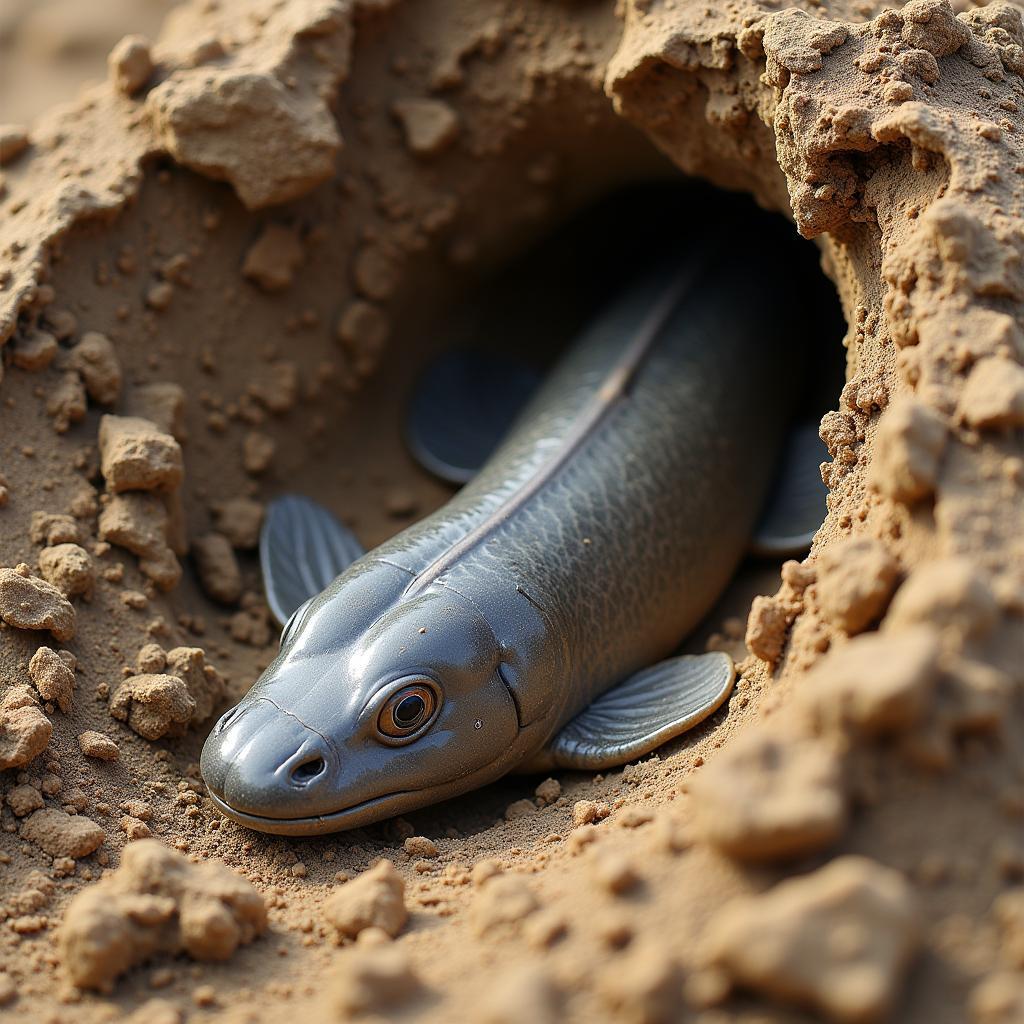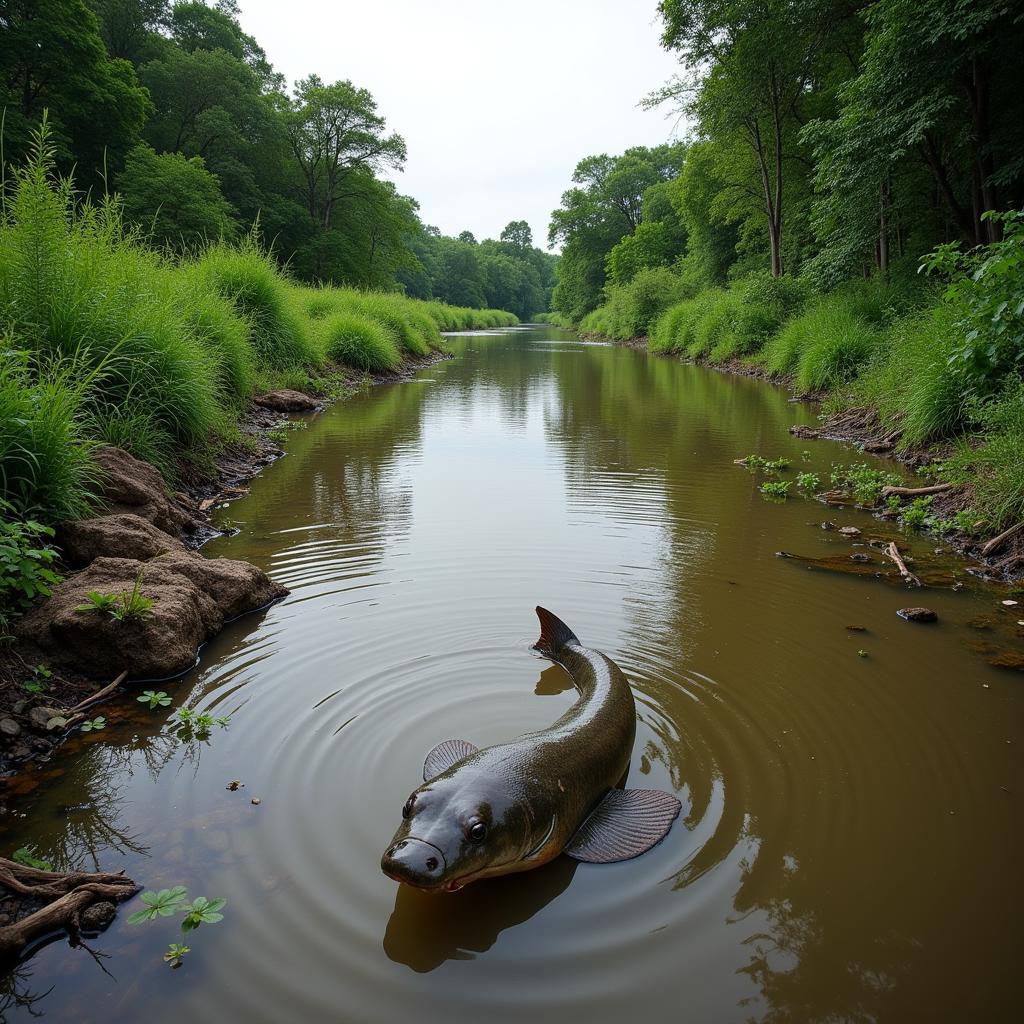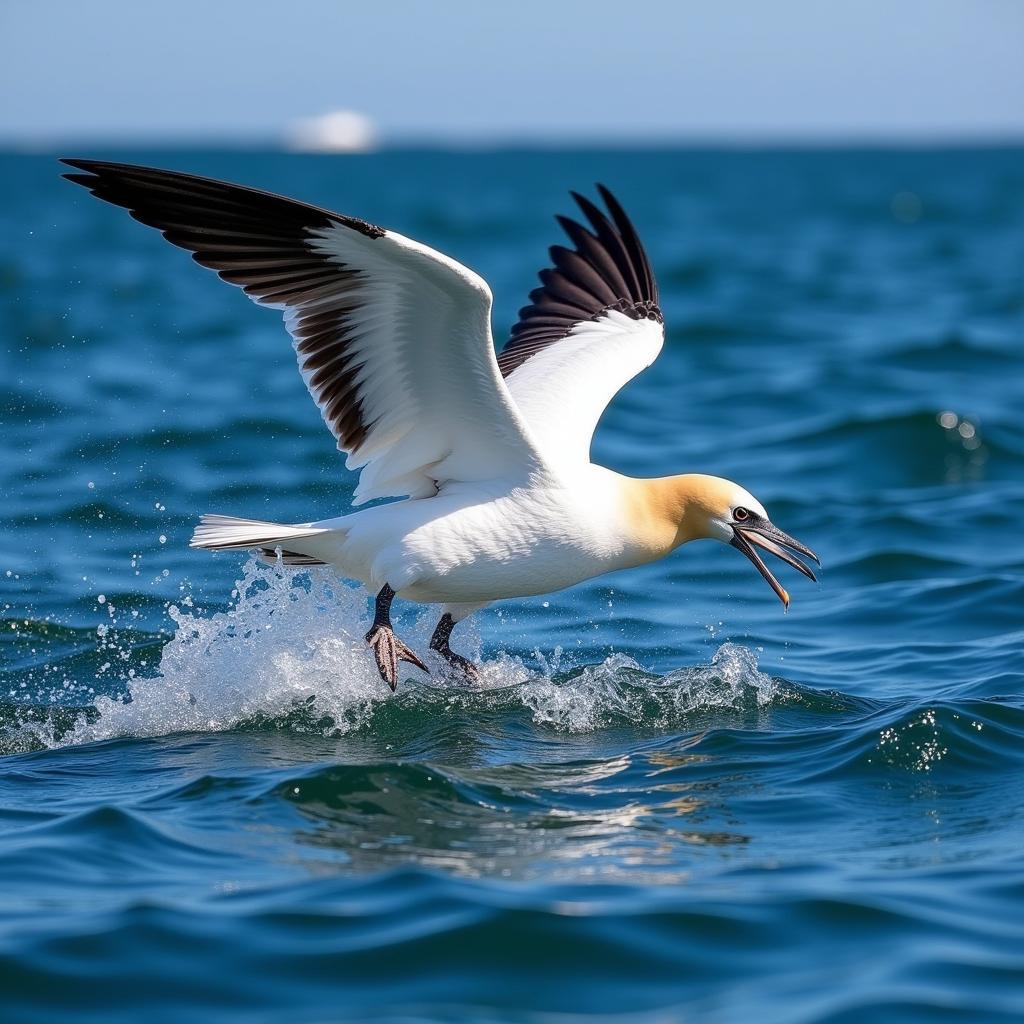Unraveling the Mysteries of the African Lungfish
The African Lungfish, an ancient and fascinating creature, represents a remarkable bridge between aquatic and terrestrial life. These unique fish, found in the freshwaters of Africa, possess both gills and lungs, allowing them to breathe air and survive in oxygen-depleted waters. Just after the introductory paragraph, you might find this link about West African lungfish interesting: west african lungfish.
A Living Fossil: Exploring the Evolutionary History of African Lungfish
African lungfish belong to the ancient group of Dipnoi, meaning “two breaths.” Their lineage traces back over 400 million years, making them truly living fossils. They offer a glimpse into the evolutionary transition from water to land in vertebrates. These remarkable fish have adapted to survive in harsh environments where other fish would perish. Their ability to breathe air allows them to inhabit stagnant swamps and even survive periods of drought by burrowing into mud and entering a state of estivation.
Fossil records show that lungfish were once widespread across the globe. Today, they are found only in Africa, South America, and Australia. This limited distribution highlights their vulnerability to environmental changes and the importance of conservation efforts. These fish play a vital role in their ecosystems, both as predators and prey.
 African Lungfish Estivation
African Lungfish Estivation
Breathing Air: The Unique Respiratory System of the African Lungfish
What truly sets African lungfish apart is their unique respiratory system. While they possess gills as juveniles, these gradually become less functional in adulthood. Instead, they rely primarily on their lungs, modified swim bladders that function much like the lungs of terrestrial animals. This adaptation enables them to thrive in oxygen-poor waters, a testament to their evolutionary resilience. Interested in learning how some African fish live without water?
Habitat and Lifestyle: Where to Find African Lungfish
African lungfish are primarily found in freshwater habitats such as rivers, swamps, and floodplains across sub-Saharan Africa. They are nocturnal creatures, preferring to hunt for invertebrates, small fish, and amphibians under the cover of darkness. Their elongated, eel-like bodies allow them to navigate through dense vegetation and shallow waters.
 African Lungfish Habitat
African Lungfish Habitat
Different Species of African Lungfish: A Closer Look
There are several species of African lungfish, each with unique characteristics. The West African lungfish, for example, is known for its vibrant coloration. The Marbled lungfish is the largest of the African species. Learning more about these different species can help us understand the biodiversity within this ancient lineage. You can explore more on African freshwater fish on our website.
Dr. Amina Diallo, a renowned ichthyologist specializing in African freshwater ecosystems, notes, “The diversity within African lungfish is often overlooked. Each species plays a specific role in its environment, and understanding these roles is crucial for conservation.”
Conservation Concerns: Protecting the African Lungfish
Despite their resilience, African lungfish face growing threats from habitat loss, pollution, and overfishing. As human populations expand and water resources become increasingly strained, protecting the habitats of these unique fish is paramount. Dr. Kofi Asante, a conservation biologist focusing on African wildlife, states, “Protecting the African lungfish is not just about preserving a single species, it’s about safeguarding the delicate balance of entire ecosystems.”
Conclusion: The Future of the African Lungfish
The African lungfish, a remarkable testament to the power of evolution, offers a unique window into the past. Understanding their biology, ecology, and the threats they face is essential for ensuring their survival. By supporting conservation efforts and raising awareness about the importance of these ancient fish, we can help secure their future for generations to come. Continuing research into the African lungfish and their habitats is crucial to their conservation. Consider checking out our resources on African catfish images and the African fish eagle kruger national park for further exploration.
FAQ
- How long can an African lungfish live without water? Several months, even years, in a state of estivation.
- What do African lungfish eat? Invertebrates, small fish, and amphibians.
- Where are African lungfish found? Freshwater habitats across sub-Saharan Africa.
- Are African lungfish endangered? While not all species are endangered, they face increasing threats.
- How do African lungfish breathe? Primarily through their lungs, although juveniles have gills.
- What is the largest species of African lungfish? The Marbled lungfish.
- How can I help protect African lungfish? Support conservation organizations and spread awareness.
For any assistance, please contact us at Phone Number: +255768904061, Email: kaka.mag@gmail.com or visit our office at Mbarali DC Mawindi, Kangaga, Tanzania. We have a 24/7 customer service team ready to assist you.
